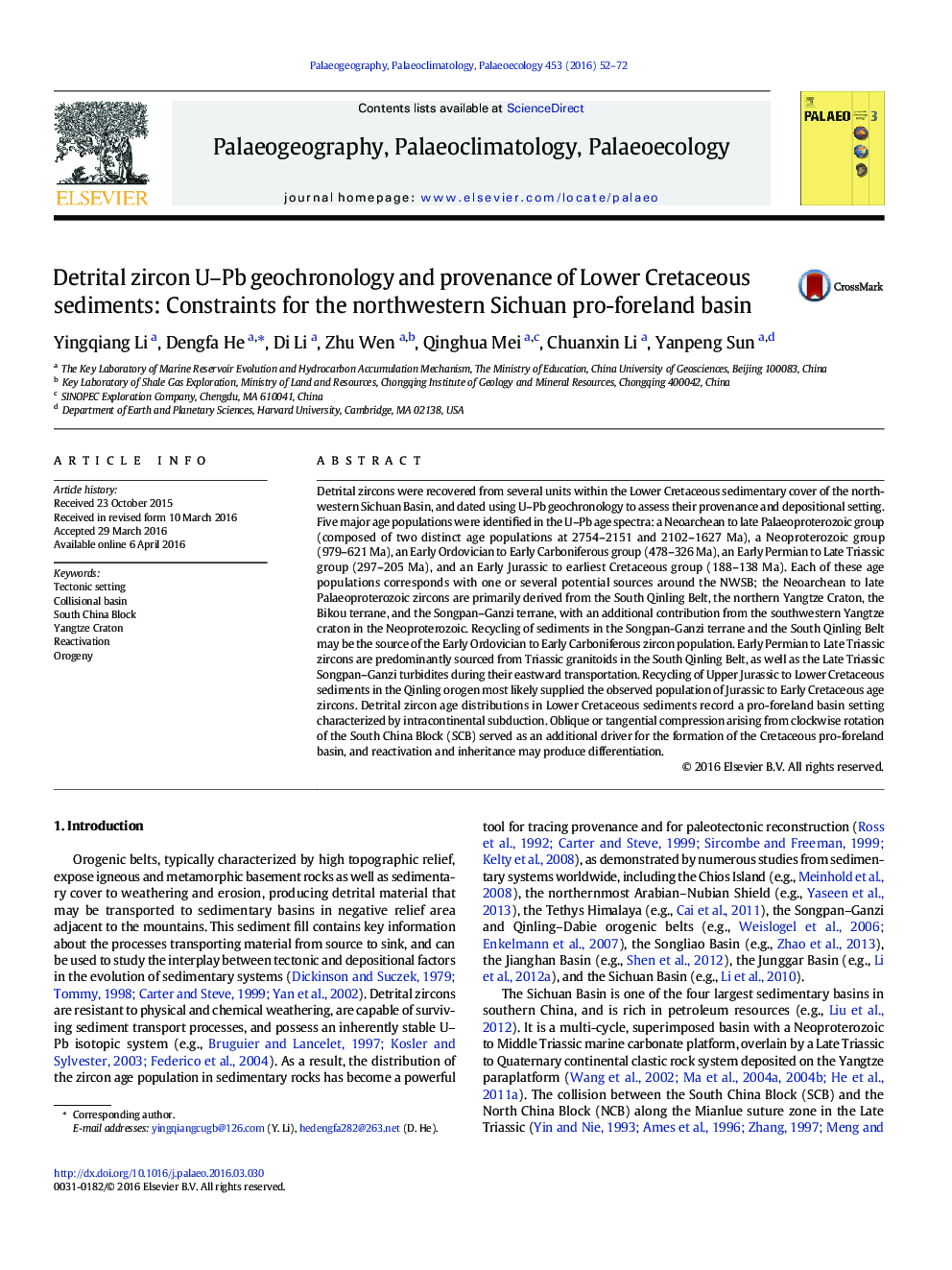| Article ID | Journal | Published Year | Pages | File Type |
|---|---|---|---|---|
| 4465699 | Palaeogeography, Palaeoclimatology, Palaeoecology | 2016 | 21 Pages |
•New detrital zircon U–Pb data of Lower Cretaceous sedimentary rocks in the northwestern Sichuan Basin are presented.•The major zircon age populations are 2754–1627, 979–621, 478–326, 297–205 and 188–138 Ma.•Multiple sources for the Lower Cretaceous sediments are unraveled.•Detrital zircon age distributions in Lower Cretaceous sediments record a pro-foreland basin setting.
Detrital zircons were recovered from several units within the Lower Cretaceous sedimentary cover of the northwestern Sichuan Basin, and dated using U–Pb geochronology to assess their provenance and depositional setting. Five major age populations were identified in the U–Pb age spectra: a Neoarchean to late Palaeoproterozoic group (composed of two distinct age populations at 2754–2151 and 2102–1627 Ma), a Neoproterozoic group (979–621 Ma), an Early Ordovician to Early Carboniferous group (478–326 Ma), an Early Permian to Late Triassic group (297–205 Ma), and an Early Jurassic to earliest Cretaceous group (188–138 Ma). Each of these age populations corresponds with one or several potential sources around the NWSB; the Neoarchean to late Palaeoproterozoic zircons are primarily derived from the South Qinling Belt, the northern Yangtze Craton, the Bikou terrane, and the Songpan–Ganzi terrane, with an additional contribution from the southwestern Yangtze craton in the Neoproterozoic. Recycling of sediments in the Songpan-Ganzi terrane and the South Qinling Belt may be the source of the Early Ordovician to Early Carboniferous zircon population. Early Permian to Late Triassic zircons are predominantly sourced from Triassic granitoids in the South Qinling Belt, as well as the Late Triassic Songpan–Ganzi turbidites during their eastward transportation. Recycling of Upper Jurassic to Lower Cretaceous sediments in the Qinling orogen most likely supplied the observed population of Jurassic to Early Cretaceous age zircons. Detrital zircon age distributions in Lower Cretaceous sediments record a pro-foreland basin setting characterized by intracontinental subduction. Oblique or tangential compression arising from clockwise rotation of the South China Block (SCB) served as an additional driver for the formation of the Cretaceous pro-foreland basin, and reactivation and inheritance may produce differentiation.
